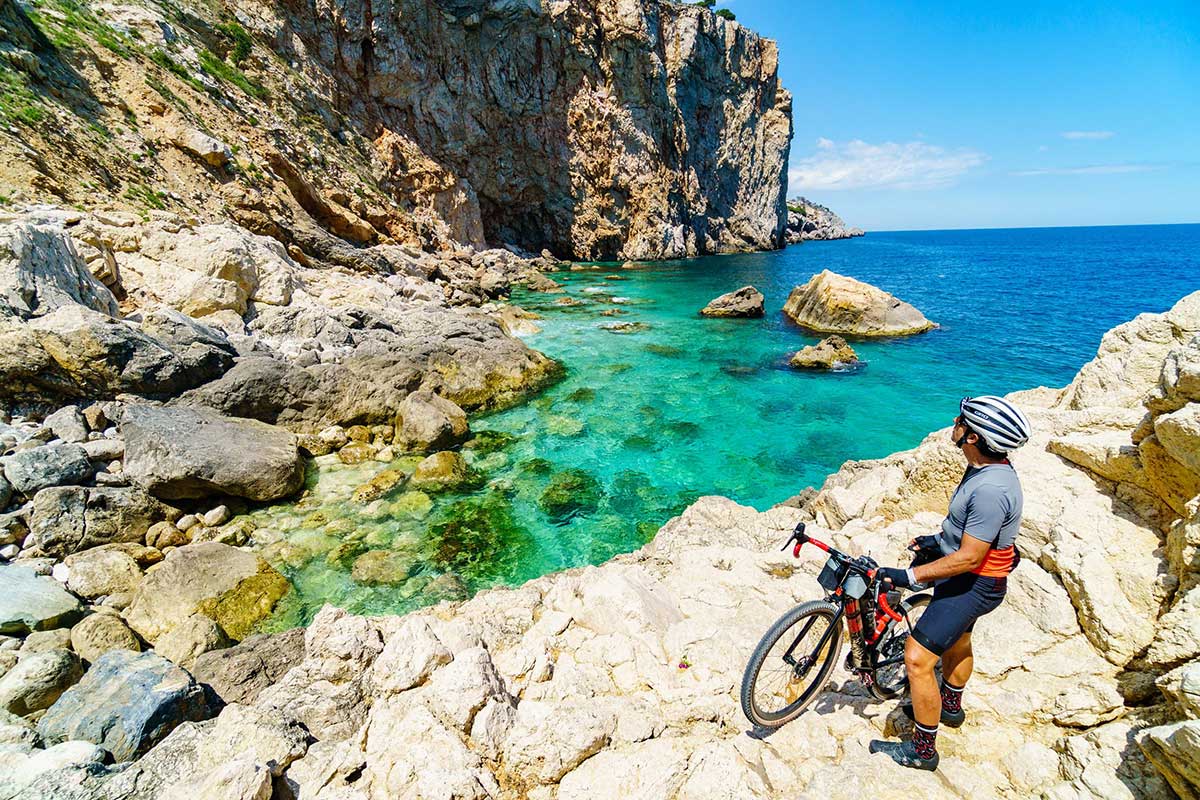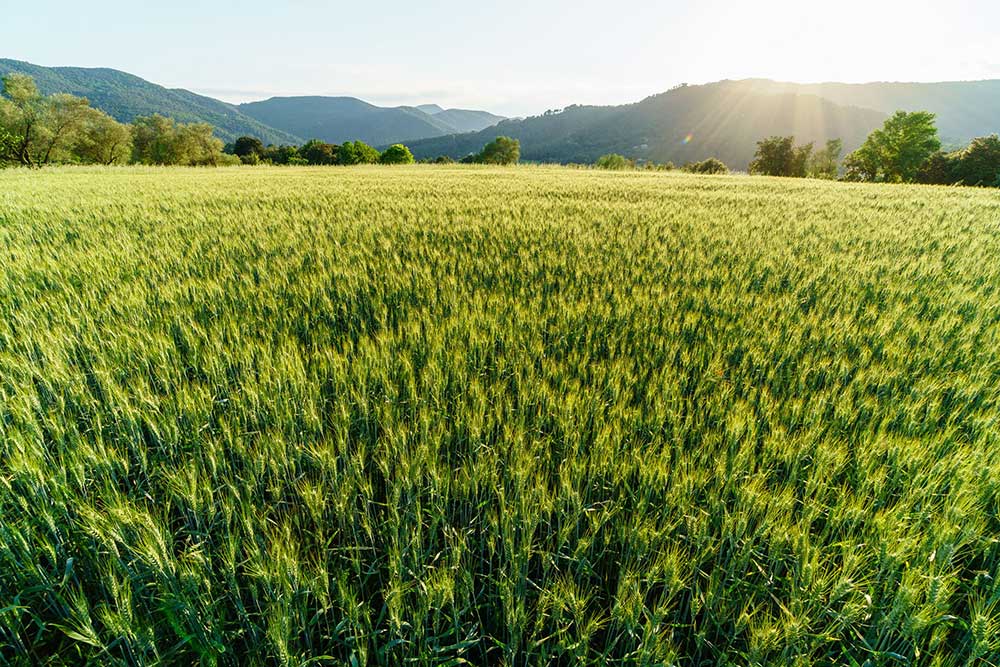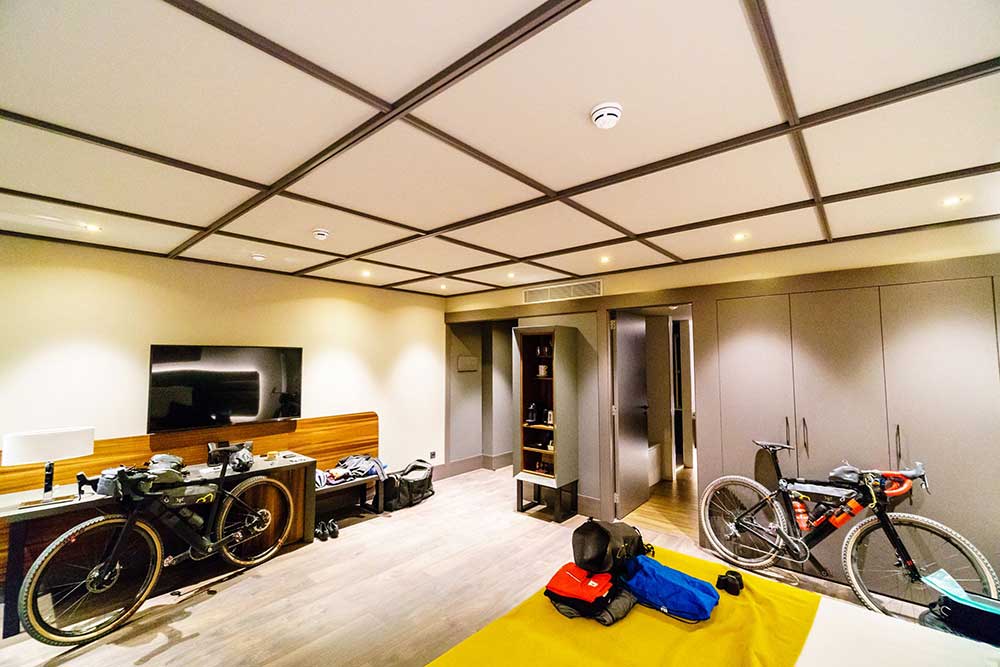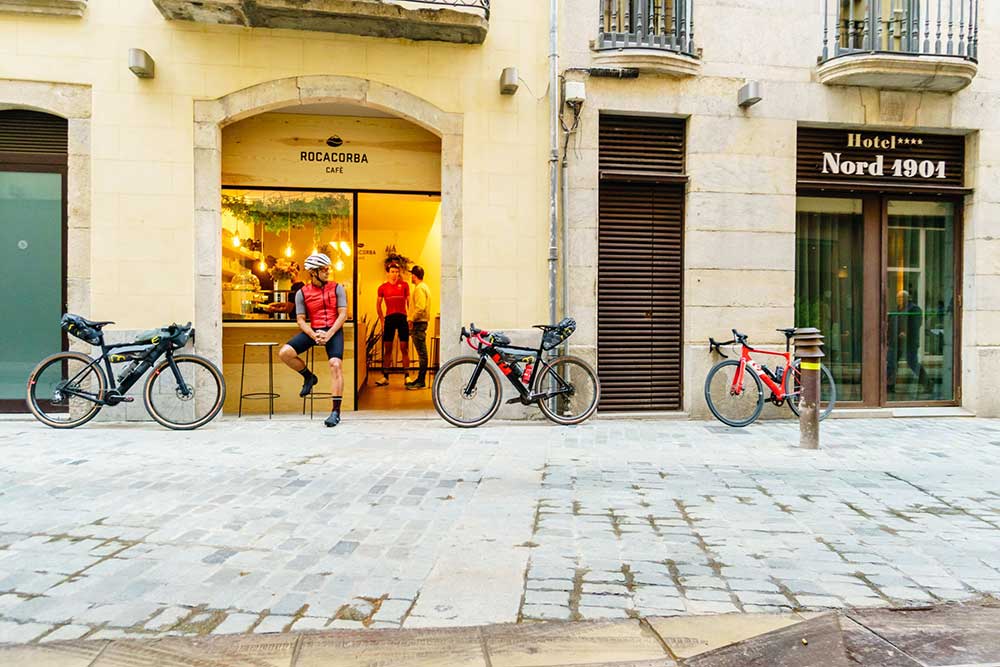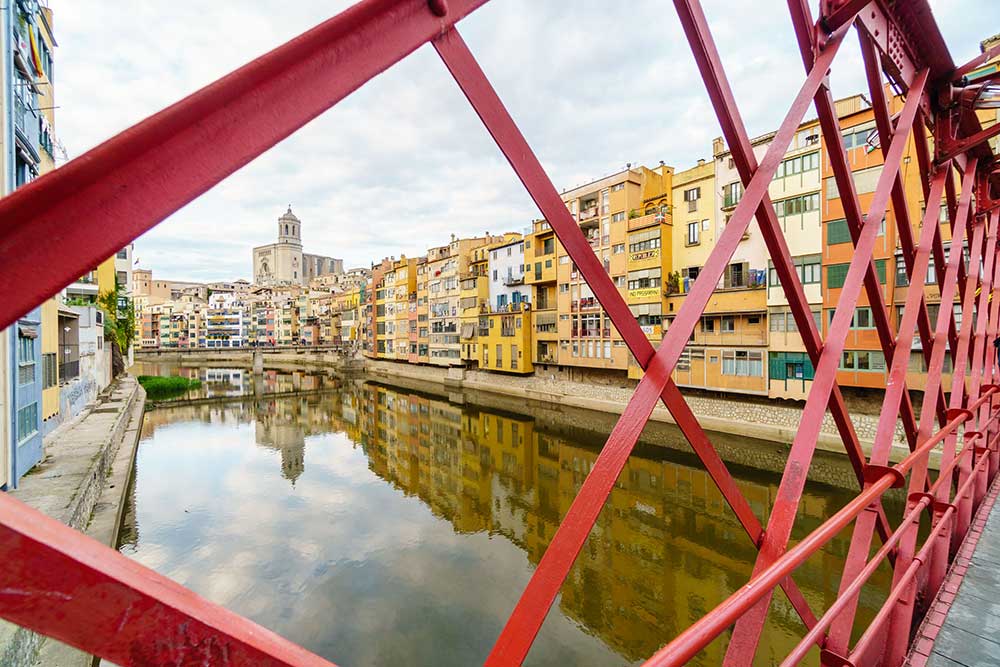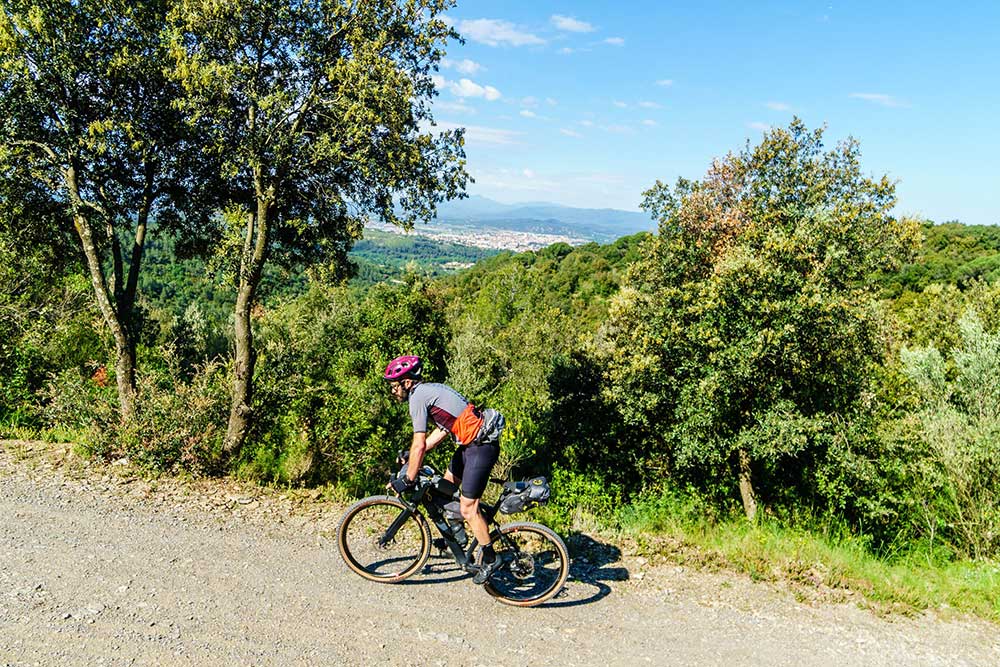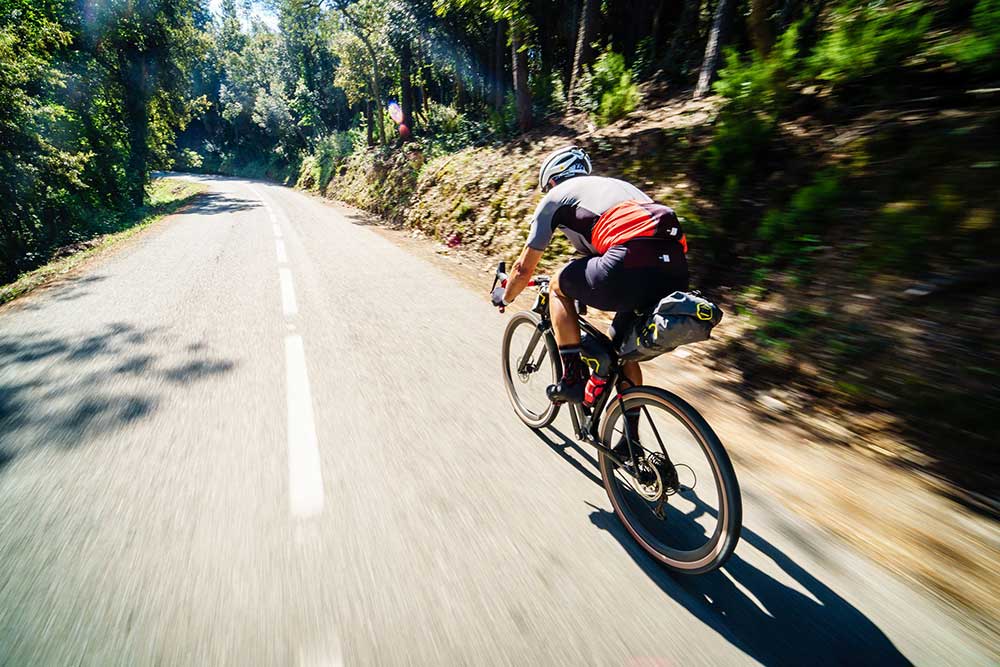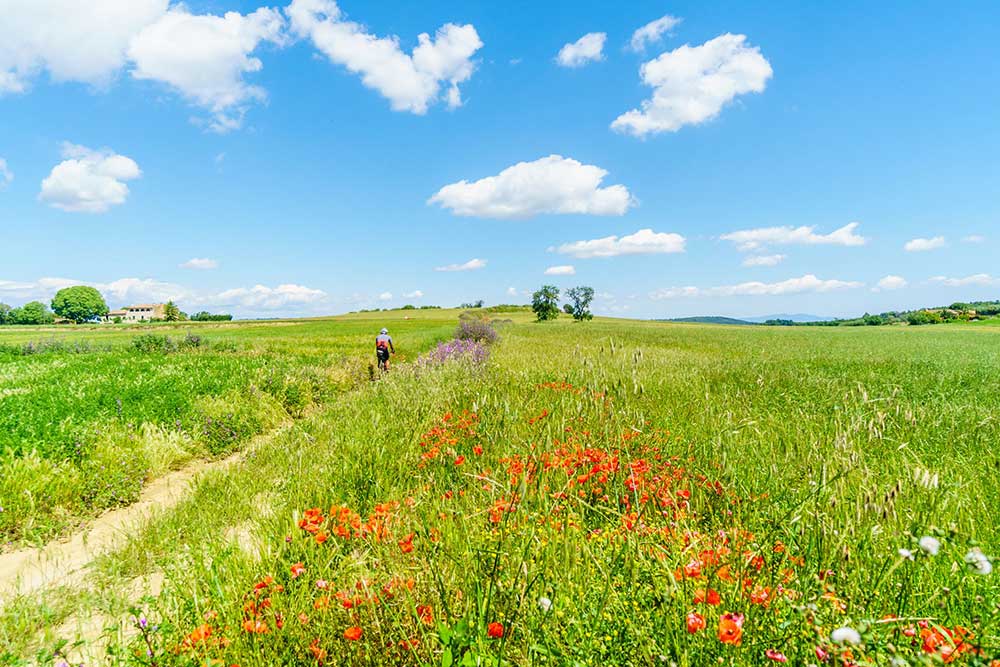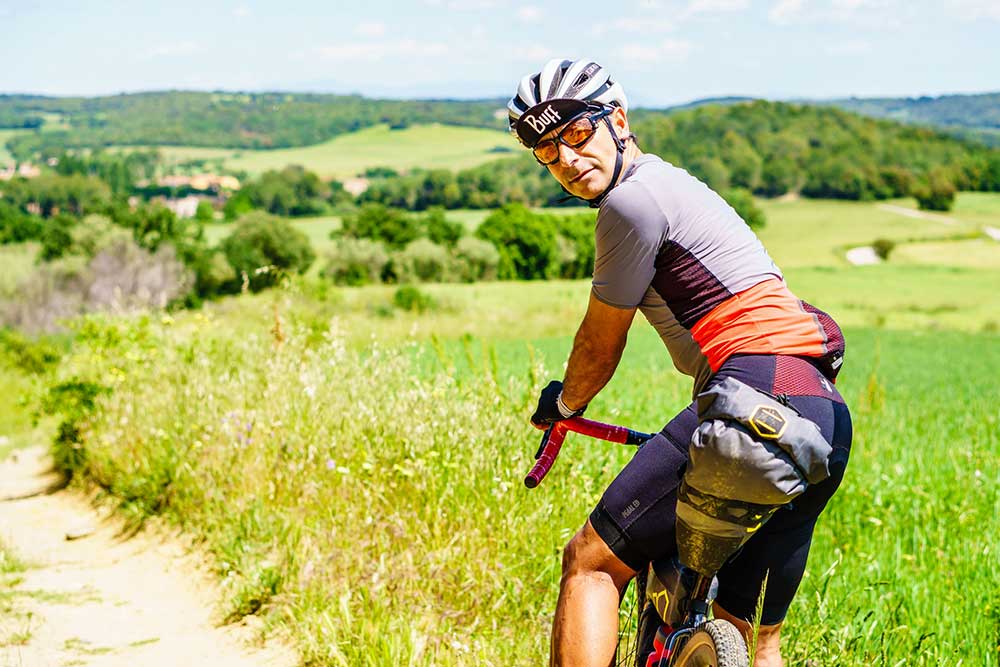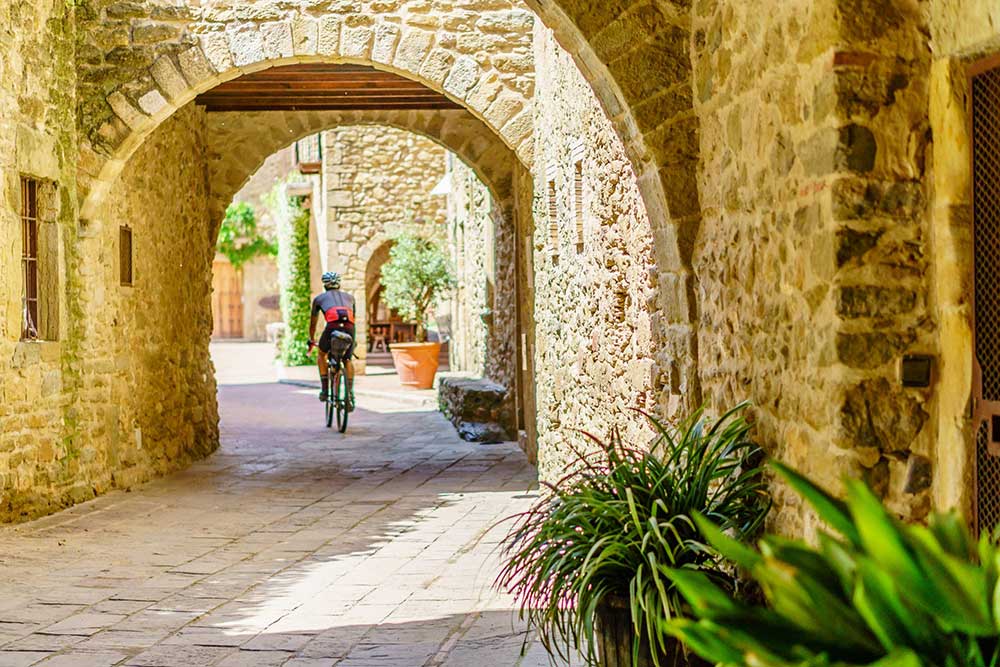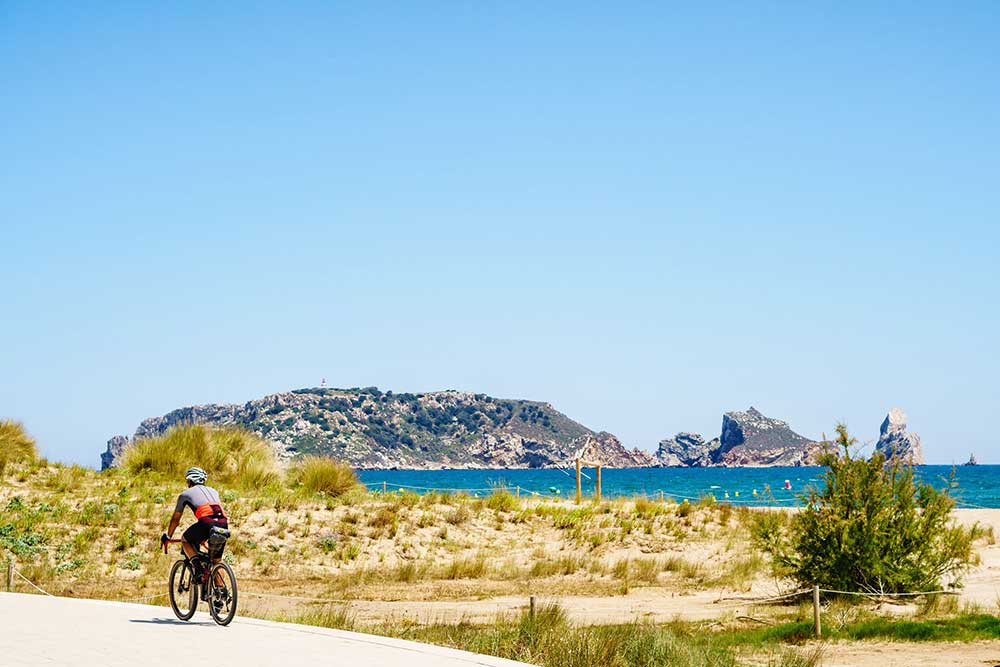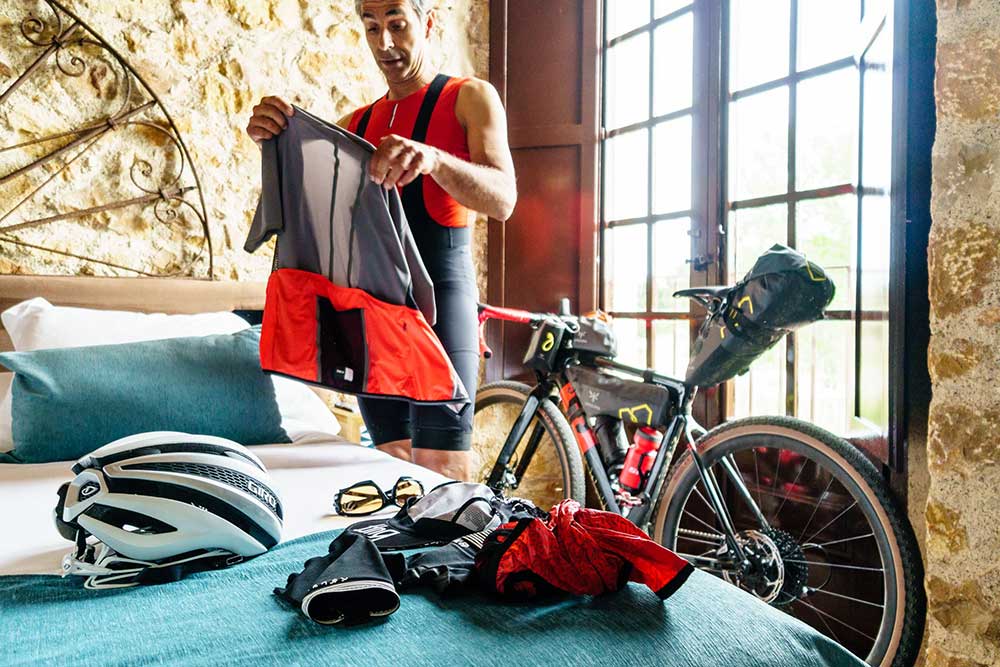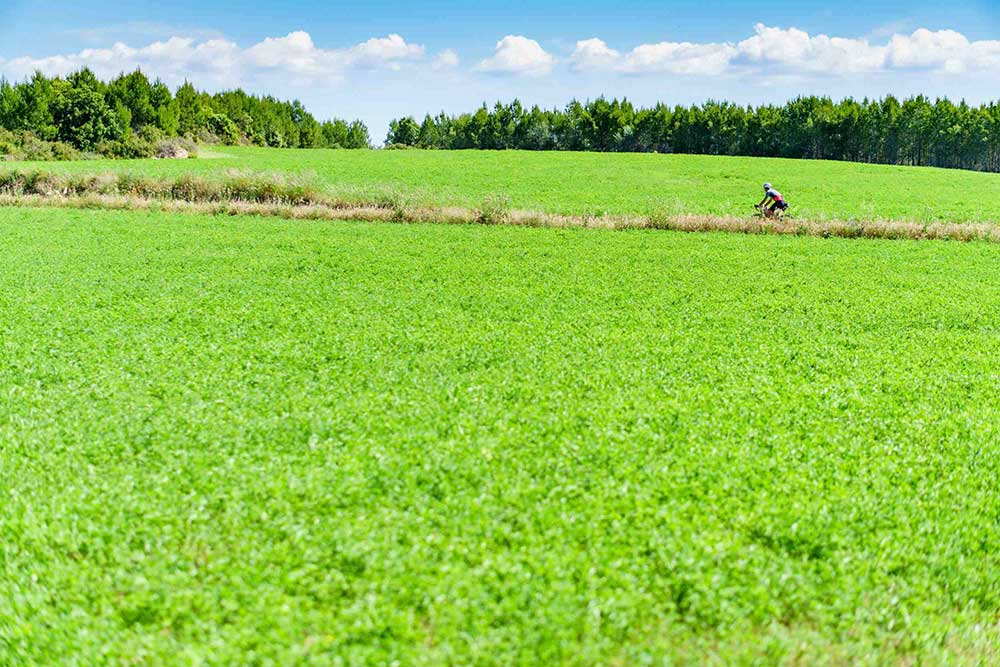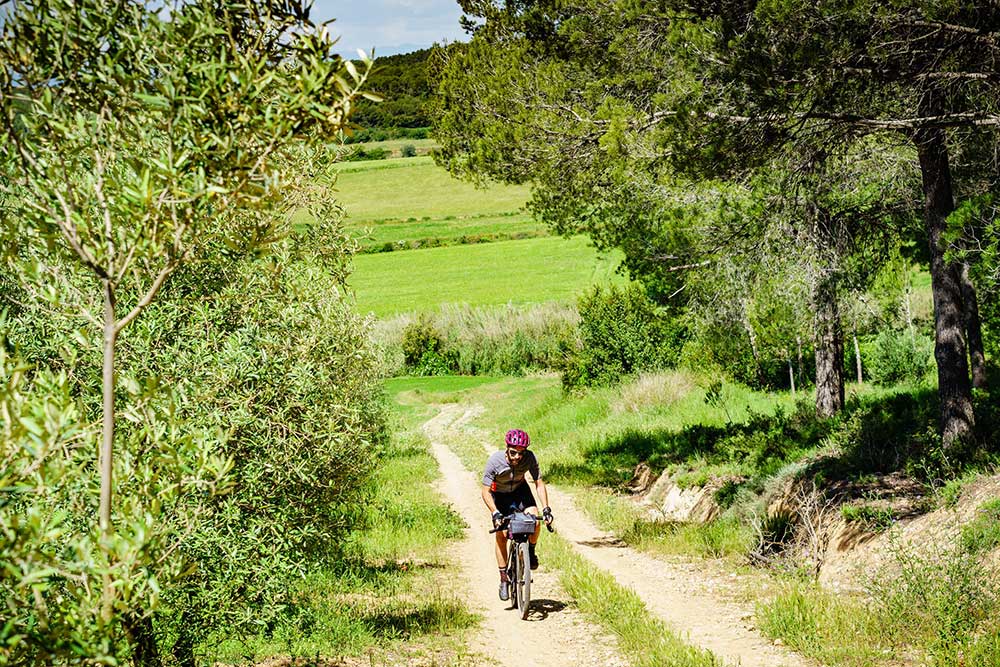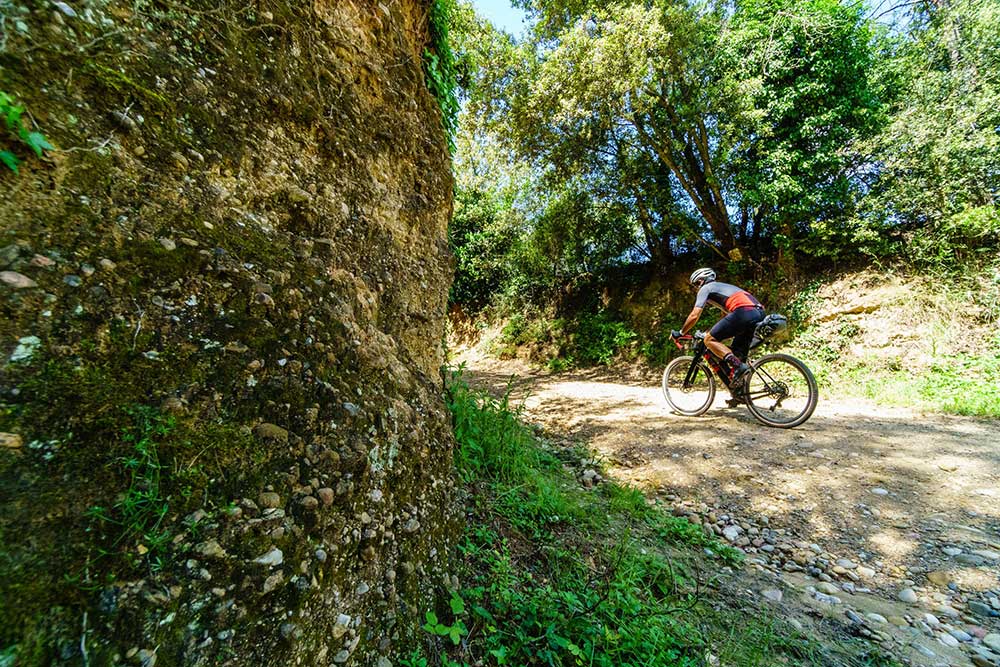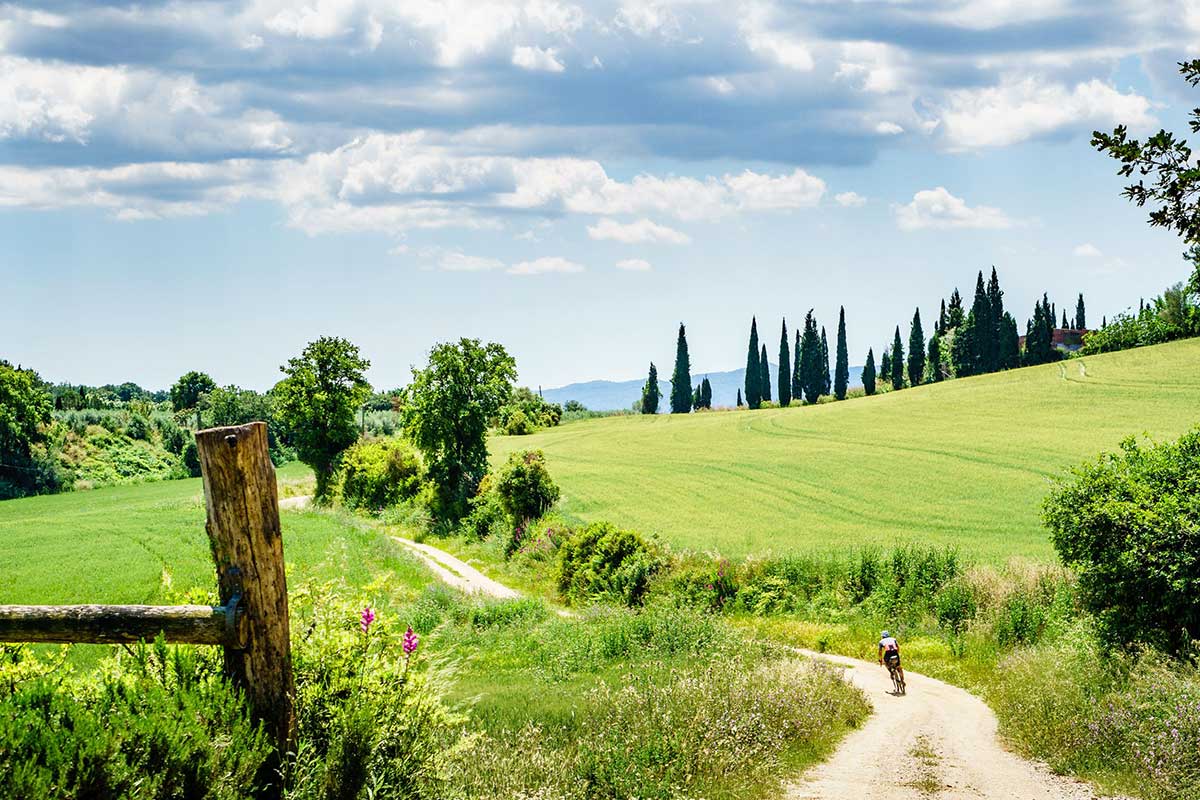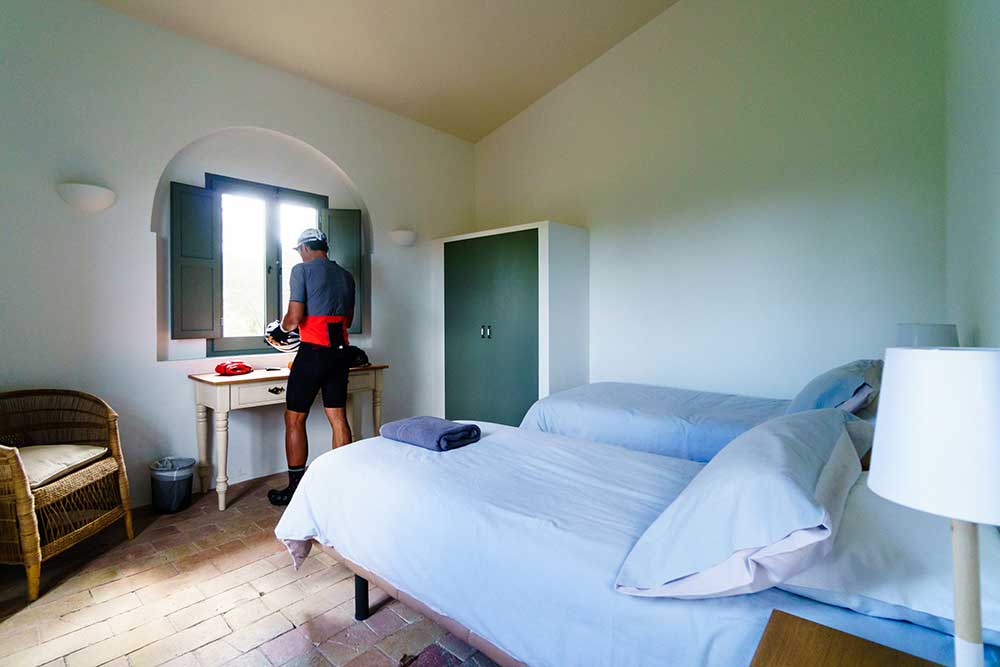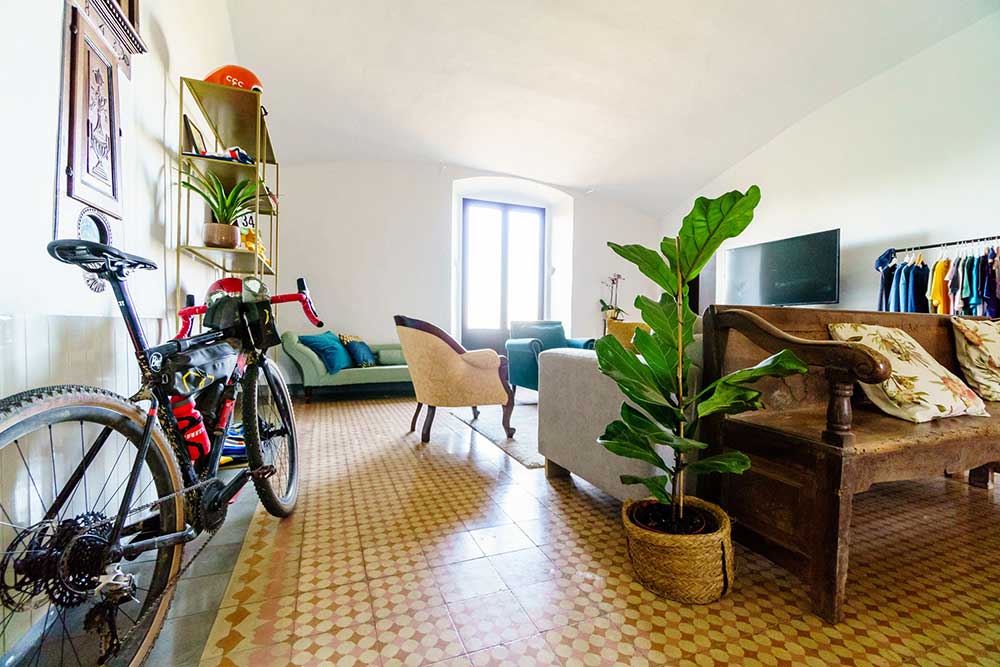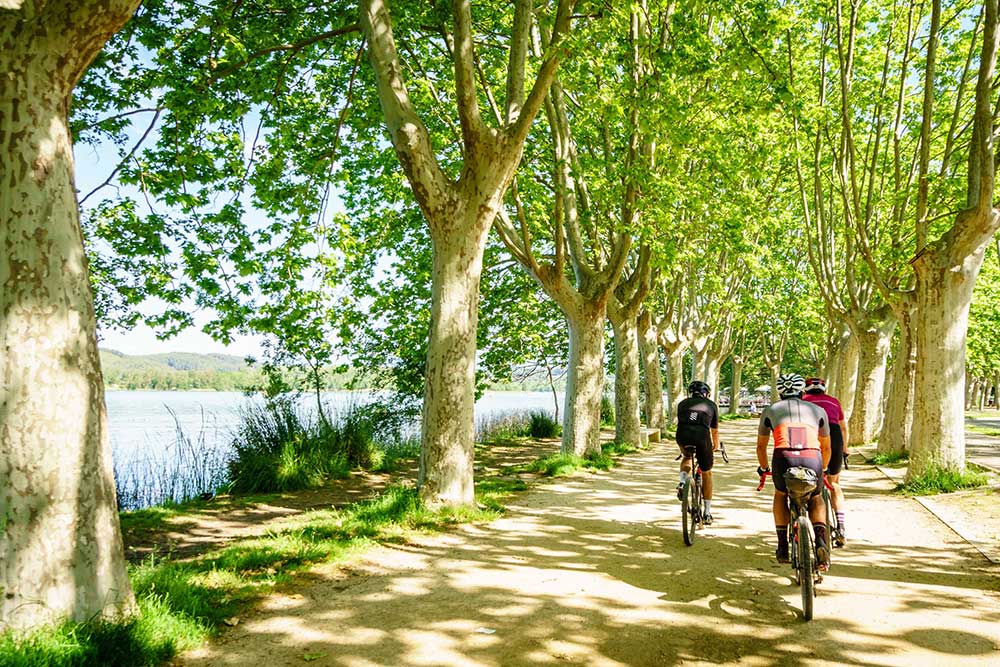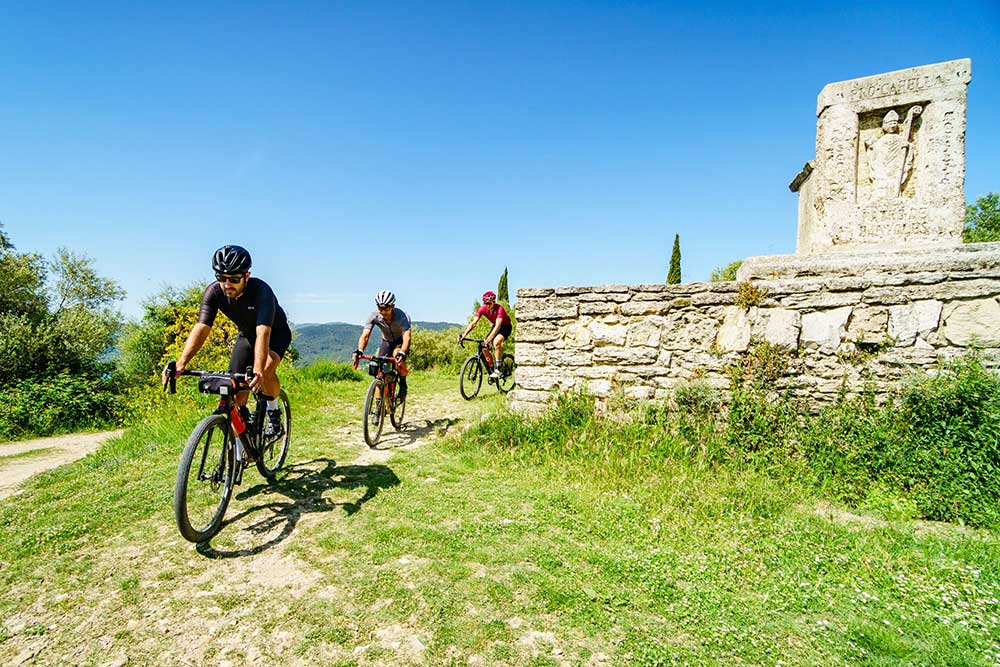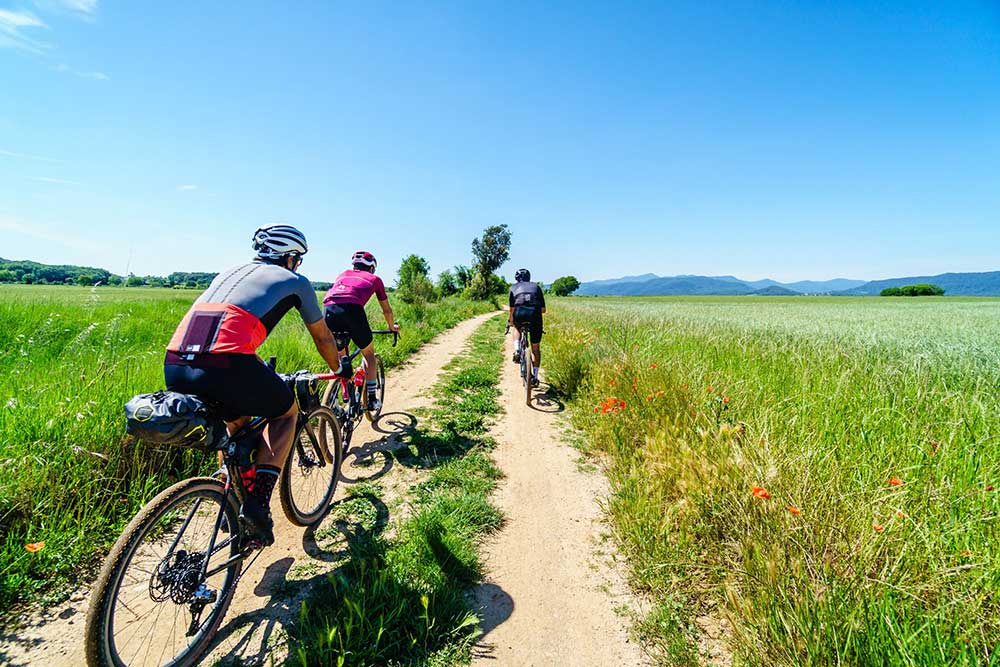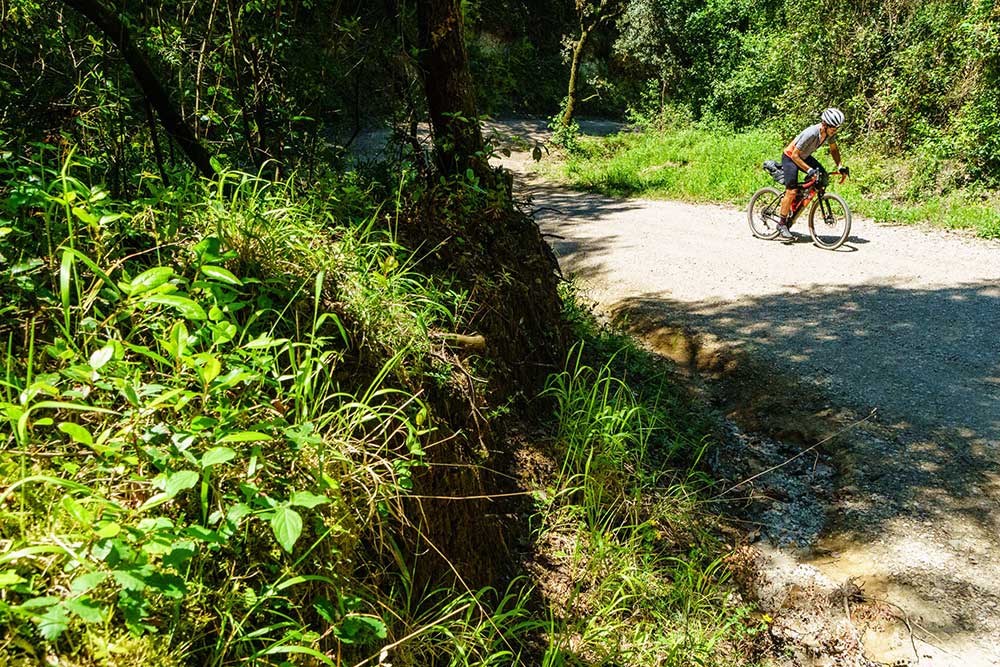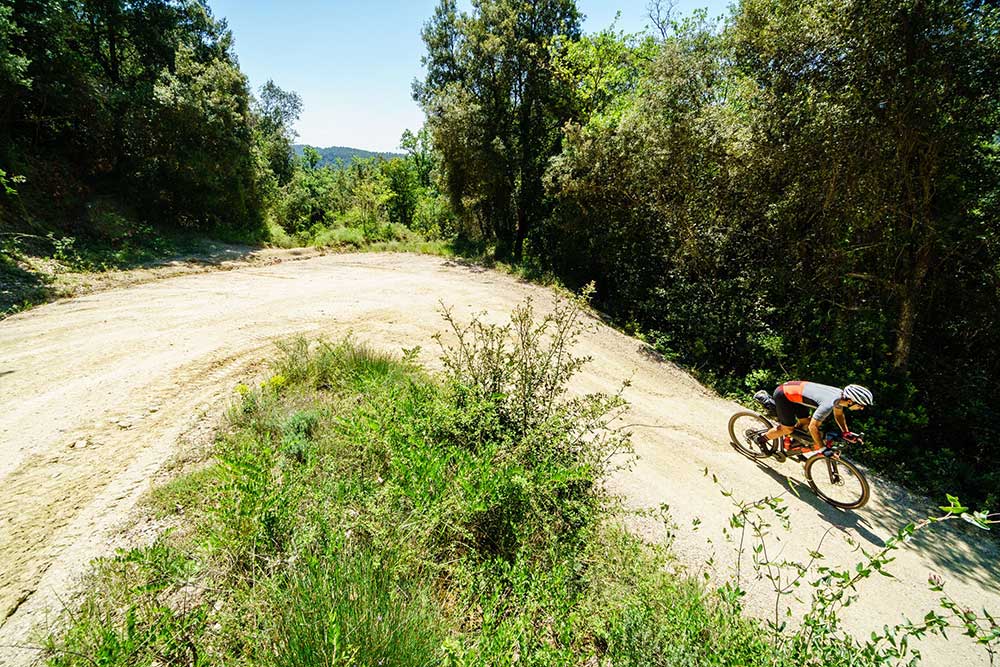Girona has become synonymous with road cycling training and boutique coffee shops, but the area has A LOT more to offer, and I’m talking about awesome GRAVEL! After our latest XPDTN3 trip to the Pyrenees mountains, we felt it was time to look for lower elevations, and enjoy the sea breeze for a while. Text & photos by Marc Gasch.
Rocacorba Cycling is one of our 3T Experience Centers in Girona, based on the little town of Banyoles, with the team formed by road racers Ashleigh Moolman, Carl Pasio, parents Johan and Sandy Moolman, plus guide, coffee lover, and all-around nice guy Edward Greene.
It was Edward who suggested a trip to Girona following some of the gravel routes he had been creating for his clients who wanted a test of the dirt on drop bars. The idea of a travel XPDTN3 trip to Girona had also been on my mind for quite some time, so it was a perfect match. Edward did an amazing job creating the GPS tracks, so this was one of those “easy to organize” (for me) XPDTN3 trips, where I just need to show up with my camera gear and document the ride. Thanks, guys!
Check the short video we did to get an overview of the trip before going deeper into the photos and story:
We let Edward tell us about each of the stages, to see what he was aiming for:
Day 1. Rolling from Girona City to the Costa Brava is all about experiencing the Medieval towns scattered in the Empordà region. Charming villages linked by fast open gravel roads eventually lead you to the Costa Brava; Girona’s famous coastline. The rugged coast made up of cliffs, coves, and rocky outcrops is a sight to behold and a worthy final destination for day 1.
Day 2: Leaving the coast behind the route runs through the agricultural region with open gravel tracks, farm roads, and a bit of singletrack before arriving in the town of Banyoles. The eponymous lake is the focal point of this sport-centric town which played host to the rowing competitions during the 1992 Barcelona Olympics.
Day 3: Wheels circle back to Girona city for the final days’ riding but not without the challenge of the famous Rocacorba climb to get out of the way first. Whilst the paved road known as the local testing climb for Girona’s many resident pro riders, the gravel route takes in the lower slopes of the mountain while still throwing in some double-figure gradients for good measure. With the climb dealt with the fast run back into Girona brings an end to XPDTN3.
DAY 1: GIRONA TO L’ESCALA
That was indeed a good recap of what we experienced on Day 1. Even for me, as a Catalan citizen, and having been in Girona before, the route was a (very nice) surprise. World-class gravel terrain, no doubt. What struck me most was the fact that you can start riding on gravel just 5 minutes out of the center of Girona. I know Girona is famous for that on the paved side of things, road pros loving having their coffee in the old city town, and being just 5 minutes later climbing on one of the (big) hills next to the city. Well, the same happens on gravel.
We stayed in the conveniently located and recently rebuilt Hotel Nord 1901, in the old town, and next to the Rocacorba Café, the perfect spot to join the nightlife in the city center and start your route without having to deal with too much traffic. Being a “Bike-Friendly” hotel with cycling facilities on the reception floor, and a easy place to store your bike downstairs (or bring it to the room, cause those are huge) Hotel Nord is the perfect starting point for your XPDTN3 trip in Girona. And if you come to Girona without a cycling partner, Lluís, the hotel owner is an avid cyclist himself, so maybe you can go together for a ride!
After the Instagram-friendly and mandatory Girona bridge photo that every tourist takes here, we pointed our gravel tires to the Mediterranean Sea, our stop for the night in the little town of L’Escala, famous for their tasty anchovies and amazing beaches. We are at the heart of the Costa Brava, one of the main tourist attractions of Catalonia, but it’s still June, and no high season yet, so the beaches are quiet and mostly empty. Probably one of the best times of the year to visit this area.
As mentioned before, just a few minutes after leaving the center of the city, we are already climbing a perfect doubletrack gravel road in Els Angels, a combo of perfect gravel and some paved sections that got our legs warmed up for the trip. Amazing views of the Girona Cathedral below us, and perfect temps! Life is good.
Late Spring is in full effect here and we are lucky to have all the green fields full of red poppies to embellish our photos. In a few weeks, all those fields will be either yellow or cropped, but right now we are enjoying this as we made our way across ancient houses and medieval towns to the Mediterranean Sea. The good temps allowed us to carry a very minimal weight on our bikepacking packs. Loren, being the badass he is, won’t even carry an emergency rain jacket. Trusting Accuweather 100% apparently.
The feeling of traveling from one point to another in self-sufficiency, but with a lightweight bike is awesome. I did the classical pannier trip when I was young, where our bikes weighted like 25 kg, and frankly, 75% of the stuff we were carrying was never used. Thankfully that has changed, with both my own experience telling me what to pack, and also thanks to new bike gear that allows this kind of trips. If you are jumping from hotel to hotel, you don’t even need a toothbrush! Ask for one at reception. No deo needed if you are good friends with your cycling partner. You will shave when you get back home. Especially in good weather and temps, bring just 1 set of cycling clothing and wash it overnight. Rain jacket doubles as an extra layer for the night at the hotel. Socks? Yes, you can wear them 3 days in a row. No big deal. That’s how we get our packs so small, and frankly, you could be even make them smaller if you are not carrying 2 cameras, 2 lenses, a DJI Drone, a couple of Gopros and, especially, all the damned chargers and cables for all those gadgets…
Halfway to the route, Monells is one of those medieval little towns you cannot miss. Take your time to have a coffee in its amazing Plaça Jaume I (Main Square), admiring the hundred year old stones all the building here are made from. Not all the towns in this route are as cool as this one, so take your time to shoot your Instagram captures to make your friends back home jealous…
From here, the route keeps alternating between solitary secondary roads with hardly any car, with perfect gravel tracks, the kind of dirt you can ride pretty fast. We chose to use our favorite WTB Venture 47 tires, but you can use smaller volume tires here, as the terrain is not so technical in this area (will get a bit trickier on the third day). Anyway, having all the WTB catalogue at our disposal, we both Loren and I of settled (for now) on the Venture, the tire I recommend to everyone asking me about the perfect all-around 650b gravel tire, where you can go 45km/h on a road and be hitting a technical rocky singletrack in the following 5 minutes.
Soon we started smelling the sea breeze in the distance, signaling we were getting close to our first coastal town in the Mediterranean Sea, L’Estartit. Home to the famous Medes Islands, a group of 7 small islands once a pirate hideaway, and now a Natural Park included in a special protection area (ZEPIM) with a marine ecosystem and biodiversity that makes them a mandatory stop for divers and research scientists. That’s it in the top photo of this story.
Our next stop was planned in advance: the little town of L’Escala is famous in Spain for their Anchovies, a delicacy with roots deep in this coastal fisherman village. A little bit of salt replacement was needed after so much sweating in the sun, right? We are almost at the end of the route, but some anchovies with “pa amb tomaquet” (classic Catalan bread with tomato spread and olive oil) with a Estrella beer is one of Loren’s favorites plates, so we sit down by the beach and enjoy some #realfood. No time for energy bars here…
The section from L’Estartit to L’Escala was amazing, with steep short climbs and a nice little paved road that wave its path through protected pine forests, in the “Montgrí and Illes Medes” Natural Park. Awesome views to the coast from up high, and very fast gravel roads, spiced with a few rocky sections. From there, if you have some extra time to spare, there are a myriad of small hiking paths (hike a bike might be mandatory for a while) that lead you down to solitary small pebble beaches. Take a towel and don’t spend as much time shooting photos and videos as we did, and you will be able to enjoy some magical places (not in July or August though, when can get pretty packed with tourists). I was planning on flying my drone here to show you the views, but it was way too windy, and I didn’t want to see my flimsy drone flying backwards to Mallorca…
Our stop for Day 1 is the Hotel Molí de l’Escala, an old Catalan “Masia” (rural house) turned into a cool and cozy accommodation with a fine restaurant for hungry cyclists. We arrive early, so we had plenty of time for our mandatory pre-dinner “siesta” (yes that’s a thing in our bikepacking trips). Very good dinner at the Hotel’s restaurant (recommended) and soon to bed. Well, I forget we need to wash our clothes for tomorrow first. D’Oh!,
DAY 2: L’ESCALA -ROCACORBA CYCLING (BANYOLES)
From L’Escala, the second day had us reaching back to the mountains from the Coast, so we say goodbye to turquoise beaches and head for the green fields, poppies blooming everywhere, and perfect temperatures again. Our target was reaching the Rocacorba Cycling headquarters in Banyoles, a quiet little town by the natural lake that gives the name to the village.
The first kilometers of the route on Day 2 confirms what Edward was telling me: this is a gravel paradise. Agriculture in the area is based around cereals, and large fields are connected by immaculate double tracks, the kind of dirt you can ride on a normal (non-4×4) car, and also the ones you can ride on an Exploro at 45km/h… A few hills here in there kill your average speed (not that we are concerned about that anyway) and add some spice to the otherwise flat-ish route (+590 m in 65 km)
We are in the Empordà area right now, a valley where the Pyrenees range comes to “die” on the Mediterranean Sea, creating a unique ecosystem that blends rocky geography further North in the Cadaqués-Cap de Creus area, with the wetlands at the Aiguamolls de l’Emporda Natural park. The terrain flows among small hills, with the perfect amount of grip and a few technical sections from time to time to keep us on our toes. Anyway, I would call this a “beginners” gravel ride (in a positive way) so a totally recommended route for roadies that want a taste of dirt and rocks on dropbars. Distances are short, not too much elevation to gain, and plenty of time to enjoy a cold drink or even a Paella in the middle of the day, take a quick siesta and keep going. Easy.
We are crossing Tuscany-esque landscapes after our lunch in the town of Medinyà, again with very quick gravel open roads that keep our speed high, only killed by the obnoxious photographer that wants to take a photo of basically “everything” . Shooting a video with drones involved also won’t help keeping the momentum, but well, we are here “working” for you so you don’t have to!
After a perfect gravel and green fields overdose, we arrived (early again) to Rocacorba Cycling, located just outside Banyoles. Located on an amazing old Catalan rural house (Can Campolier) perched above a small hill that gives a 360º view to the Banyoles Lake (1,5km) and the Rocacorba mountain climb (2km from here). The complex is formed by a series of (huge) old buildings dating from back in the 17th century, that used to host a big family of farmers. After being semi-abandoned for a long time, the Rocacorba team bought it and start building a dream place for cyclists. Such a big task takes time, and by the time we were there, an amazing swimming pool was being built. The main building have space for tons of people, and it has a blend of newly renovated spaces mixed with the old flare of a house that is 4 centuries old. We were loving the old floor tiles and the heavy duty doors! What about that patio with mega-cobblestones and the orange trees? Magical.
Ashleigh Moolman and husband Carl Pasio were training abroad at that time, so we were in the caring hands of Johan and Sandy Moolman, a lovely couple taking the role of what we call “masovers” here in Catalan. Edward was also there taking us out for dinner in Banyoles, and getting ready for a ride on Sunday, so we asked him to join us at least for the first kilometers of the route. Our friend Xavier Guell (@thecyclingculture) was also coming to ride next day on his Exploro with Edward, so we decided to ride all 4 together to Banyoles and the first part of the route, and then they will go back, while we keep going back to Girona. Perfect!
We stayed at Casa Germà, an adjacent building next to the main house that was used for other purposes back then, but it’s now your perfect guest house, newly renovated and decorated with “mucho gusto”. The kind of place you want to crash after a long day on the bike, complete with all the facilities, garden, barbacue, fireplace in the dining room and even a huge TV to watch the TDF in high cycling season. You can rent a room here, or the full house if you come in a big group or team.
DAY 3: ROCACORBA CYCLING (BANYOLES) – GIRONA
After a good night of peaceful sleep (not without washing our one and only cycling kit again first…) Johan and Sandy prepared an amazing breakfast for us, while other guests in the house were also getting their bikes ready (you can rent road and 3T Exploro gravel bikes here at Rocacorba) for the day. Xavi also showed up a few minutes later with his newly built Exploro Team ready to go, and we started loading the GPS tracks to get back to Girona. Being coffee lovers here as well, we went for a second round of Italian espressos on the amazing Rocket Espresso machine, man I love that thing… I need to save some money to get one in my place.
We started the day riding down to the Banyoles Lake, and we even stopped for a third coffee there, sitting in a terrace on the water while Edward told us this is a natural lake (not a dam) fed by the waters coming from the Pyrennes mountains to the North, and it’s the biggest one in Catalonia. Banyoles hosted the Barcelona 1992 Olympic Games rowing competition, and today it’s a world-class spot for international teams to come here training. The Korean team was there on that week, and they are are loving the good climate all year round, quick access to the lake and the perfect still and clear waters. There are also Triathletes coming here to train on the lake, so Rocacorba Cycling also makes a lot of sense for triathletes looking for a location to train on their 3 sports.
After leaving Banyoles we rode together to the Pla de Centenys, doing a big loop around the Banyoles Lake. Edward and Xavi were planning on doing a shorter gravel loop before going back to work, and they would part ways with us when we reach the start of the Rocacorba gravel climb.
Once we finished the lake loop, we said goodbye to Xavi and Edward and they drop us just at the base of the Rocacroba climb. We are doing a different Rocacorba today though. There is a pure road climb that goes all the way up to the top of the mountain, but we are, of course, taking the gravel version, which climbs from the West side of the Lake before turning right at Sant Esteve de Campmajor and skipping a part of the road climb.
Climbing at the feet of Rocacorba on gravel might be shorter than the classic “roadie” version, but a few steep pitches get you wishing for more gears, so be prepared for some “big cog” moments here and there. Anyway, traction is good and the terrain is high-speed if your legs want to cooperate…
Just when we were getting very hungry, we found out this little village in the middle of nowhere called Sant Joan d’ Adri, with a nice restaurant where we had a tasty Paella before our last section to Girona. The Menu at Can Joan D’Adri was a complete 3-course meal, so we were happy to found later than the rest of the route was mostly downhill. Before we knew it, we were again looking at the beautiful Girona Cathedral main tower in the distance, and rushing to get a gelato after a relaxing shower at Hotel Nord, and getting ready for a night out enjoying the cultural and vibrant nightlife Girona has to offer.
But more important than nightlife, Girona indeed has amazing gravel terrain! Talk to Edward if you want to have a taste next time you plan a trip there and you won’t be missing the pavement Girona is now famous for…
Thanks again to all our partners for making this mini-adventure possible! 3T, WTB, BUFF, FIZIK, PEDALED and KOMOOT, you rock!
And special thanks to Lluís Hortet at Hotel Nord 1901, and the crew at Rocacorba Cycling for helping with the logistics and making us feel at home
PRACTICAL INFO
Location: Girona, Spain
Stages: 3
Distance: 200 km
Ascent: 2.600 +m
Best Time To Go: All year round? Avoid July-August if you can’t stand the heat or the busy hotels. Maybe skip December-January if your toes get numb in the cold, but it is really not that cold anyway. That’s one reason why Pros keep coming here to train.
Terrain: Easy gravel terrain with a few technical short sections here and there
Tires: You can ride this route almost on any gravel tire, from 700×38 to a knobby tire. We settled on our favorite WTB VENTURE 47mm, running tubeless with 60ml of sealant, and carrying tubeless plug-worms just in case. I also like to carry a lightweight Tubolito spare innertube for bigger holes and sidewall accidents where the sealant won’t work.
Gearing: We rode our TORNO cranks on 36T chainrings, 10-42T SRAM cassette on the back (11 speed SRAM Force). A 40 or even a 42T will also work as long as you have a 42 in the back.
What to wear: We chose the complete PEDALED ODYSSEY collection. A rain layer like the Odyssey Waterproof Jacket and a lightweight reflective VEST is always ready on our saddle bikepacking pack. We used the “ORIGINAL” BUFF tubular this time. And we are now fans of the new PACK BIKE super breathable caps. You can wear those under the helmet without getting warm, as it happens with other thicker-non breathable generic cycling caps. The FIZIK INFINITO X1 shoes are perfect for gravel adventures, comfy, super lightweight, stiff sole for power transfer, and easy to dry at night if they get wet!
HOTELS
Hotel Nord 1901 (pre and post-ride in Girona)
Carrer Nord, 7-9 17001 – Girona – Spain
+34 972 411 522
info@nord1901.com
Hotel Molí de l’Escala (end of day 1)
Camí Vell a les Corts, S/N, 17130, Girona
+34 972 77 47 27
Accommodation at Rocacorba Cycling (end of day 2)
Can Campolier, 17834 Porqueres, Girona
+34 872 20 26 86
info@rocacorbacycling.cc
RESTAURANTS
Day 0 dinner in Girona
Federal Cafe
Carrer de la Força, 9
17004 Girona
+34 872 26 45 15
Day 1 Breakfast
Rocacorba Cafe (next door to Hotel Nord)
Carrer Nord 5
17001 Girona
Day 1 lunch
Cafè restaurant La Caravel·la
Carrer la Platja, 3
17130 L’Escala, Girona
+34 972 77 40 43
Day 2 lunch
Restaurant El Caliu De Medinyá
Carretera Vella,
17482 Medinyà, Girona
+34 972 49 80 64
Day 3 lunch
Restaurant Can Joan d’Adri
S-N, Lugar Veinat Adri, 0
17199 Canet d’Adri, Girona
+34 972 42 86 91
info@canjoandadri.cat
Day 3 final dinner in Girona
DRAPS
Carrer de la Cort Reial, 2
17004 Girona
+34 872 08 04 30
COPY OUR ROUTES
Below you will find more photos, the GPS routes we took on the WAHOO and planned on KOMOOT:
Day 1: www.komoot.com/tour/79786654
Day2: www.komoot.com/tour/79786936
Day 3: www.komoot.com/tour/79787097
Like this story? See more and bigger photos on the 3T blog.
